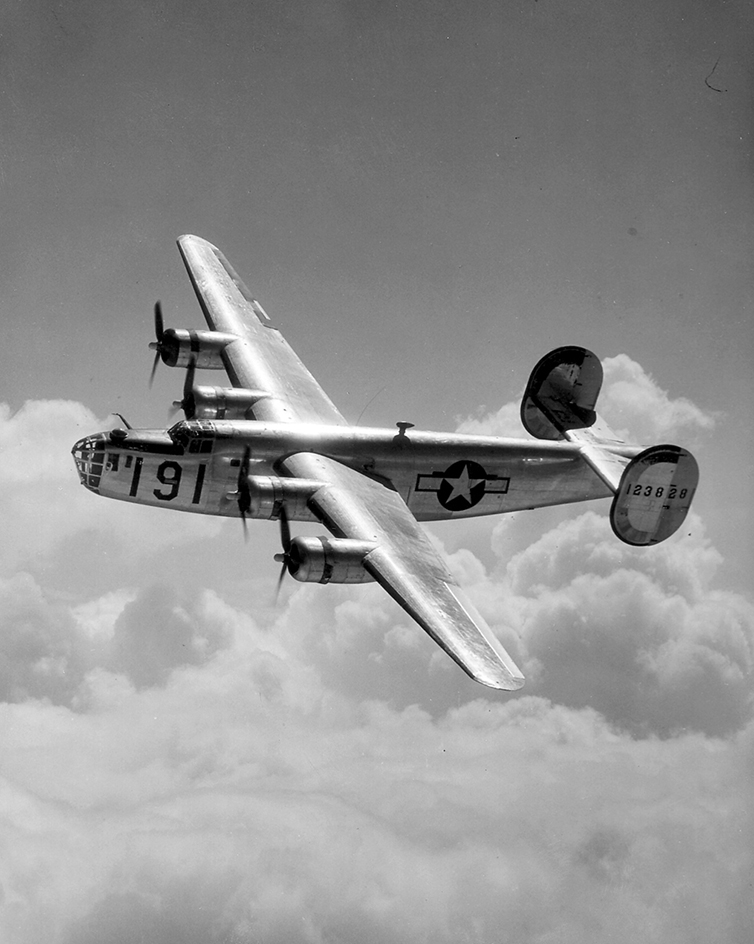B-24 Liberator was a heavy military airplane used by the United States and its allies during World War II (1939-1945). The B-24 Liberator was a four-engine bomber—that is, an airplane used to drop explosives. B is the U.S. military’s designation for a bomber. The Consolidated Aircraft Company designed the plane. More Liberators were built than any other American military airplane. The B-24, with its distinctive high main wing and twin tail fins, became a lasting symbol of American air power.


The B-24 carried as many as 11 heavy machine guns, 10 crew members, and about 9,000 pounds (4,082 kilograms) of bombs. The bomber flew at a top speed of about 300 miles (480 kilometers) per hour. It reached a maximum altitude of 28,000 feet (8,530 meters). It had a range of more than 3,000 miles (4,828 kilometers).
Consolidated tested the first B-24’s in late 1939. The planes entered World War II combat with the United Kingdom’s Royal Air Force and the U.S. Army Air Forces in 1942. B-24’s flew missions out of northern Africa and the Middle East, striking targets nearby and across the Mediterranean Sea in Europe. The B-24, along with the B-17 Flying Fortress , became the backbone of U.S. heavy bomber groups.
B-24’s fought on every front during World War II. They raided oil refineries in Ploiesti, Romania. They also hit refineries supplying the Japanese in Balikpapan, Borneo, an island in Indonesia. Liberators bombed Pacific islands, such as Saipan and Iwo Jima (now Iwo To), prior to Allied assaults. B-24’s were also used for reconnaissance (information gathering), antisubmarine patrols, supply missions, and other duties.
The armed forces retired and scrapped most B-24’s soon after World War II. Some of the planes remained in U.S. service into the 1950’s and in foreign air forces into the 1960’s. In total, more than 18,000 B-24’s were built, many by the Ford Motor Company in Detroit. Thousands were lost in combat.
See also Bomber ; World War II (The air war) .
